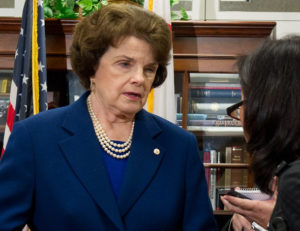Today The Economist launched its first prediction model for elections to the United States Senate (economist.com/senatemodel2020), as well as an updated version of its forecasting system for the House of Representatives (economist.com/housemodel2020). The Economist’s models give the Democrats a 68% chance of winning the Senate majority and a 99% chance of holding the House.
The Economist’s House and Senate statistical election models update every day as more data becomes available, and predict how many seats in the House of Representatives and Senate each party is likely to control in the next Congress. A total of 470 seats in the U.S. Congress are up for election (35 Senate seats and all 435 House seats), including two special elections for the U.S. Senate.
Applying cutting-edge machine-learning techniques to political science, the model combines information from polling, each district or state’s voting record, results of special elections around the country, fundraising, candidates’ ideology and more. It has been trained on every election cycle since 1942, and uses data from more than 10,000 historical legislative races. The model will conduct 4.7 million simulated elections every day until the vote, making use of the latest data from pollsters and fundraising reports as soon as they become available. Full details of the models’ methodology can be found here.
Now in the thick of the 2020 elections, John Prideaux, US editor explains “Americans are facing some of the most important elections in US history. With these two new models, our “Checks and Balance” newsletter and podcast we aim to give our readers and listeners fair-minded analysis in what will be an emotionally charged media environment. Although the reporting from our US-based correspondents will be local, the election coverage will put what is happening in an international context, which is what our audience expects from The Economist.”
Dan Rosenheck, The Economist‘s data editor, notes that the battle for the Senate is “arguably as important as the race for the White House itself. If Joe Biden becomes president, it will be up to the Senate to decide whether he can govern effectively. And unlike the presidency, there are no national polls for the Senate. It takes cutting-edge machine learning to sift through all the data on the wide field of competitive races, and determine the true state of the race.”
The Economist’s model currently predicts that the Democrats have a 68% chance of wresting back control of the Senate. On average, it estimates they will win 51.4 of the chamber’s 100 seats, though with high uncertainty: its 95% confidence interval stretches from a low of 47 Democratic-held seats to a high of 56. The model is much more confident that the Democrats will hold the House of Representatives: its average simulation gives them 241 seats, seven more than they currently hold and 23 more than is needed for a majority. 95% of its simulations fall between 221 and 263 seats, and the Republicans win back the House in just 1% of them.
The Economist’s US coverage
The US continues to be a priority market for The Economist. North America accounts for 56% of The Economist’s 1.6m global circulation (print & digital).
In addition to the House and Senate model, The Economist has launched a dedicated US 2020 elections hub as a guide to US politics, and in June The Economist added its first-ever presidential election forecast model. It estimates Joe Biden and Donald Trump’s probabilities of winning each state, the electoral college and the popular vote and is updated daily. It was the first model to be published in 2020 by a prominent news organisation.
In January The Economist launched “Checks and Balance” newsletter and podcast. Distributed each Friday, the newsletter highlights the best of The Economist’s election coverage across all its digital platforms. The “Checks and Balance” podcast is hosted by three Economist journalists, who are joined by a cast of Economist correspondents from around the world. Each week they go beyond the horse race to dig into an important theme shaping American politics. “Checks and Balance” has been downloaded more than 9 million times since its launch.
House forecast model:
economist.com/housemodel2020
Senate forecast model:
economist.com/senatemodel2020
Presidential forecast model:
economist.com/us2020model
US election hub:
economist.com/USelectionHub2020
Checks and Balance podcast:
economist.com/ChecksandBalancePodcast2020
Checks and Balance newsletter:
economist.com/ChecksandBalanceNewsletter2020









Be First to Comment